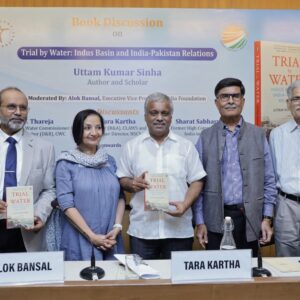China’s aggression in the Indian Ocean reflects India’s significant presence as its interest stems from the fact that approximately 50 percent of its trade with Asia passes through that route. Thus, it is important to explore several other strategic interventions in strengthening relations with ASEAN nations. One such example can be with the Mekong region countries to signal a significant shift in the balance of power.
Mekong-Ganga Cooperation (MGC), launched in the year 2000, is a sub-regional initiative comprising India and five ASEAN countries: Cambodia, Laos, Myanmar, Thailand, and Vietnam. Rivers are more than just natural symbols, they are the core of civilisation, the Mekong mirrors the same. This initiative is an effort to signify the millennia-old cultural and commercial linkages among the member countries of the MGC. From the time it came into being, the members of MGC are working towards evolving comprehensive methods of co-operation in the field of tourism, culture, education, transport, and communication. The formulation of the MGC underlined a larger paradigm shift in India’s foreign policy, particularly with the initiation of the Look East policy under then Prime Minister Narasimha Rao.
To further the cause of the Act East policy, the MGC has to be constructively strengthened. The immediate need for the countries in the Ganga-Mekong region is to evolve a long-term strategy to deal with the rapid urbanisation. To start with, the Ganga-Mekong region is witness to the rapidly increasing population of more than 100 million over 2500 miles long river by 2025, environmental degradation (average flow reduced by 10 percent in 30 years), and considerable strain on finite resources. Therefore, there is a huge possibility that countries in these regions might face acute shortage of water, energy and other resources.
In addition to this, there is declining growth rate in rural areas in the countries of this region; Mekong region is considered the rice bowl of Asia. Close to 75 percent population of the combined Mekong region is dependent on agriculture and fisheries for protein. The annual harvest of 3.9 million tonnes (2.2 million tonnes captured) values between US$4.3 to US$7.8 billion to their economy in 2012. Therefore, it is imperative to balance growth to suit the needs of both urban and rural areas as well as remove people from abject poverty. The need of the hour is a clear cut strategy to consider urbanisation as an opportunity and not a threat.
The countries must understand the crucial function of the food-water-energy nexus in achieving sustainable development in the Mekong and Ganga regions. It is important that every policy be put into practice within the broader ambit of water governance and management, as managing water pollution and water scarcity and rejuvenation of the rivers are the key priorities for the countries in the region. Towards this, effective policies and integrated management practices are required for not just cleaning of rivers and increasing agricultural productivity with optimal resource allocation, but also to increase water use efficiency in the energy sector and reduce energy intensities in water sectors.
MGC has been hobbled by problems like absence of clear timelines vis-a-vis policies, uncertainty about sources of funding, and inadequate implementation and review mechanisms. Another fundamental problem is that, as emerging powers in the region, India and Thailand have to be the main drivers and financial supporters to the MGC. The attention of all the non-Indian members of MGC, who are also members of the older established Greater Mekong Sub-region(GMS) together with China’s Yunnan province, is more focused on the GMS. Another most important constraint in multilateral cooperation within MGC are the bureaucratic hurdles and lack of political initiative in the last one and a half decade.
It is important to understand the MGC is a valuable framework that India could use to build ties with five countries of ASEAN that are geographically and culturally closest to India. Despite the focus on MGC by all members and especially by India, there still exists a wide gap between the approved and implemented programmes, and projects are often taken up without proper follow-up. So for the success of MGC, an integrated approach is necessary. As the largest country in the region, it is in India’s interest to play the role of a leader by building a consensus while keeping the focus on the larger economic and strategic implications. For this, India needs to adopt a consultative approach that is multi-dimensional in nature across sectors and institutions. No one model of regional cooperation is perfect unless it can concentrate on things like sustainable and inclusive economic growth, poverty elimination, and infrastructure development.
India’s relations with the other MGC countries still has a lot of potential. To counter-balance China, India can use this to its strategic advantage; it is pertinent to note that MGC member countries, notably lower Mekong river, have always placed more trust in India rather than on China. (In shadow of China proposed multiple dams on upper Mekong river are on ominous threat to life on the Mekong river.) India today provides more than 900 different type of scholarships to the youth of the MGC countries on an annual basis under the bilateral and multilateral tracks. India has always supported connectivity corridors especially the concept of the East-West corridors connecting India to the Mekong region. And India’s soft power has the potential to generate larger diplomatic gains with other MGC countries.
Seamless communication between the member countries revolving around common threats, challenges, opportunities, and strengths in every sector is the need of the hour to avoid any possible conflict. Finally, for MGC to work cohesively, it is important that all members of MGC should focus on different communication strategies to disseminate information and knowledge (traditional and scientific), and maintain connectivity and solidarity among the Mekong and Ganga regions.
(Author is a Senior Research Fellow at India Foundation. The views expressed are strictly personal.)



